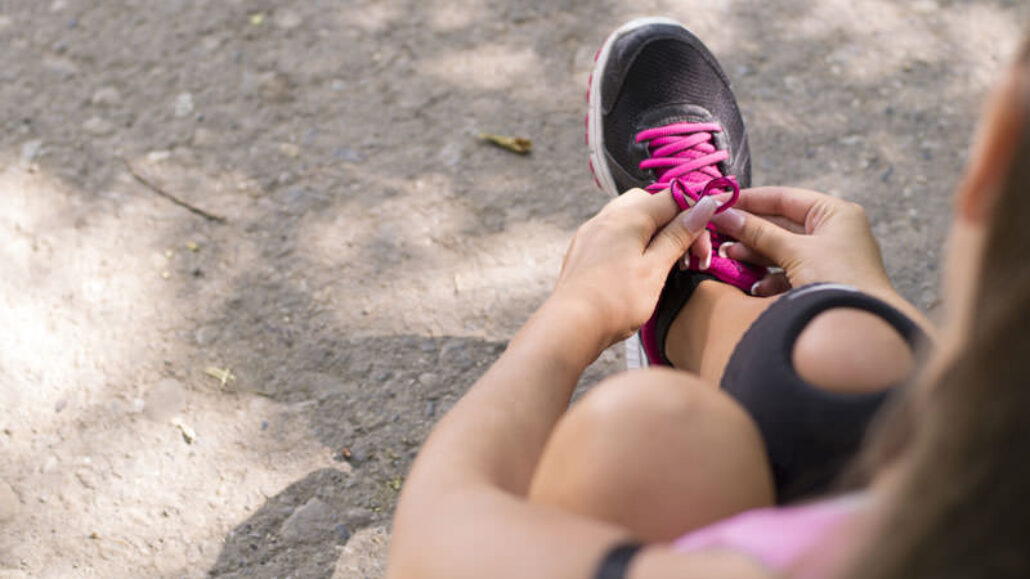Once you’ve dislocated a kneecap, you are at increased risk for subsequent dislocations that can cause significant knee damage over time. Dr. Skendzel explains why medical treatment is so important for the first dislocation, and discusses the injury risks.
Unstable kneecap risks
Anyone can dislocate a kneecap. Although this injury is painful, a first dislocation can usually be handled conservatively with bracing and physical therapy. The greatest concern among unstable kneecap risks is that a first dislocation makes you more prone to subsequent dislocations—with cartilage damage that can be difficult to repair.
“I see a lot of dislocated kneecaps in my practice,” says sports medicine surgeon Dr. Jack Skendzel. “Although anyone can pop out a knee, this injury is particularly common among young active men and women participating in sports or recreational activities. When I treat this injury, my biggest concern is cartilage damage, which increases the risk of osteoarthritis later. I don’t want these athletes facing arthritis at a young age.
Early treatment to help prevent re-injury
“We can almost always treat first dislocations conservatively with bracing and physical therapy. Our concern is recurrence. If you’ve popped out your knee and recovered with conservative treatment, there’s a 58 percent chance that you’ll experience continuing limitations six months after the injury and a 55 percent risk that you won’t return to sports. More important, there’s a 44 percent risk that you’ll dislocate your knee a second time. After a second dislocation, there’s a 50 percent chance of a third dislocation. After every dislocation, it becomes easier and easier for the kneecap to dislocate. Repeated dislocations, one of the unstable kneecap risks, is best counteracted with early treatment.
Protecting your cartilage
“What we worry about as orthopedists,” explains Dr. Skendzel, “is not the kneecap, but the articular cartilage underneath it. Every time that kneecap pops out of joint, you risk damaging the joint cartilage. The cartilage you are born with can’t be made good as new once it’s been damaged. We have some techniques to fix it and regrow it, but cartilage does not regrow very well, and new growth will never be as good as your original cartilage. Every dislocation has the possibility to slough off and break cartilage, making it one of the unstable kneecap risks. That’s what we want to prevent. This is why when we heal a primary dislocation, and then the knee pops out again, we discuss surgical treatment to reconstruct the ligament or stabilize the joint to halt the succession of dislocations. Articular cartilage is precious, and we want to protect that cartilage for the long run.”
Summit Orthopedics offers comprehensive sports medicine expertise
From Olympians to pro athletes to kids in youth sports and those that just want to be more active—Summit Orthopedics delivers expert care by fellowship-trained sports medicine physicians. If you are recently injured or concerned about ongoing pain, Summit Orthopedics sports medicine specialists have the expertise to evaluate your discomfort and develop a plan to quickly and safely help you get back to being active.
Start your journey to stronger, healthier athletic condition. Find your sports medicine expert, request an appointment online, or call us at (651) 968–5201 to schedule a sports medicine consultation.
Summit has convenient locations across the Minneapolis-St. Paul metro area, serving Minnesota and western Wisconsin. We have state-of-the-art centers for comprehensive orthopedic care in Eagan, MN, Vadnais Heights, MN, Plymouth, MN, and Woodbury, MN, as well as several additional community clinics.
Additional unstable kneecap resources
- More from Dr. Skendzel on unstable kneecaps: Surgical Options For Unstable Kneecaps
- Find out: Do You Have An Unstable Kneecap?
- More on Summit’s Sports Medicine services
- From American Academy of Orthopedic Surgeons (trusted external resource): Unstable Kneecap

